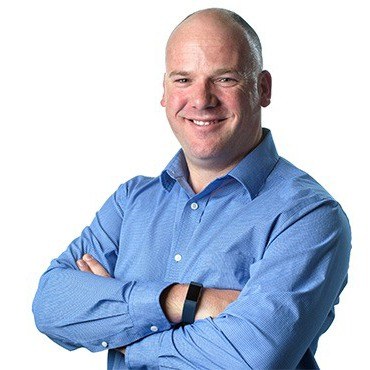
Tech researchers today face a trifecta of serious challenges: Demand for game-changing insights is greater than ever, but they have far fewer people to get the work done, and there is no relief in sight as organizations slow or freeze hiring. A dedicated team of Implementation Consultants is an innovative solution that resolves all of these challenges.
Put the ‘D’ in DIY Market Research with a Dedicated Team Model
I was recently asked about the biggest change I have witnessed in market research since I started my career in the Technology sector a quarter century ago. My response was immediate. It’s undoubtedly the massive push by organizations over the past few years to internalize market research. With mixed results.
Back when I started, organizations relied almost entirely upon outside market research agencies to deliver technology market insights and research much like they relied upon advertising agencies to tackle their creative. Trust the experts to deliver the goods. But with the advent of platforms like Qualtrics, Medallia and SurveyMonkey, a ‘DIY’ approach to conducting market research became feasible, even desirable. Technology organizations, in particular, being no strangers to SaaS platforms, were some of the first and most rapid adopters.
Shifting some types of research in-house has clear benefits. Research teams can move faster and support their stakeholders in rapid, research-backed decision-making. But that’s only when research teams have sufficient internal resources to leverage these DIY platforms. Someone still needs to put the ‘D’ in DIY. That’s where dedicated teams can play a vital role.
A High-Caliber Dedicated Team is Not the Same as Low-Value Market Research Outsourcing
In the early years of market research SaaS solutions, I would often repeat Jim Jarmusch’s famous quote: “Cheap, fast and good . . . pick two. If it’s good and fast, it won’t be cheap. If it’s cheap and good, it won’t be fast. If it’s fast and cheap, it won’t be good.” And when the two main advantages of DIY research were touted as being cheap and fast . . . well, you figure it out. What makes a SaaS solution work is when it is in the hands of skilled researchers and analysts who know the advantages and limitations of the platform. But many corporate research teams are in a staffing squeeze. They may not have an extra set of skilled hands to make the most of their in-house solutions. This is where a dedicated team of Implementation Consultants can help.
Take, for example, the story of my client with a four-person research team that went from managing about 200 research projects a year with a stable of vendors to moving it all in-house. It rapidly became a two-person team because — as it turns out — researchers want lives too. The net result was that nothing was cheap. Or fast. Or good. It just simply didn’t get done.
And that’s why years later, researchers on the vendor side, like myself, are still in business. Like our clients, we’ve evolved too. One way is by meeting our clients’ changing needs by providing high-caliber ongoing support for their in-house market research. Sound contradictory? Not at all.
Internal market research is here to stay, and with good reason. There are areas of research that organizations are best-placed to perform themselves – a simple satisfaction survey, for example. But successfully executing ongoing research requires a level of consistency, analytical skills and deliverable creation that can drain time away from other high-value priorities. Especially now, when priorities are shifting, and market uncertainty has everybody wondering which way to pivot. Having a flexible, dedicated team of skilled researchers and analysts ensures ongoing workflows keep humming and stakeholders get the insights they need to act quickly and decisively.
We hear this a lot. “My team is too bogged down in logistics, programming and slide creation rather than delivering insights.” At the same time, “We don’t have time to hire, train and supervise new talent with everything else going on.” And yet . . . “We don’t want to outsource because who knows what we’ll get.”
Recently, there’s an even bigger problem, “We need a bigger team, but we’re in a hiring freeze.” Escalent’s Implementation consultants model is unique in that it is a fully managed service. We build and manage dedicated teams with the skills and experience levels our clients require. Teams are fully dedicated to clients, but they aren’t internal FTEs. And this isn’t your typical market research outsourcing where contractors rotate on and off projects, and you never really know who or what you’re going to get. Our dedicated teams are durable and also flexible. Clients get reliable auxiliary talent that they can scale up or down with workstream demand.
Add Bandwidth Without Adding Headcount with Implementation Consultants as a Managed Service
The chatter I hear today is very different, and, in many cases, it’s genuine panic. Internalizing research was relatively easy back in a boom economy. Converting budgets that were assigned to vendors into salaries for internal researchers was simple enough when hiring wasn’t an issue. Internal teams burgeoned. Then along came the pandemic, and the newly-fat research departments were an easy place to make cuts. After all, surveys could be paused and nobody was doing focus groups anyway.
But as we emerge from the worst of the pandemic, we find ourselves in a decidedly tricky middle ground. The demand from stakeholders for quality research has rebounded to levels way above what we saw in 2019. Yet the research teams tasked with doing all this research, much of it now in-house, have not rebounded in terms of their headcount. In fact, very often the opposite, as staff cuts in 2020 were compounded by the “big quit” in 2021. It’s a combination of factors resulting in exhausted researchers who have seen their job profiles change dramatically and don’t much like sitting up late on a Sunday night creating the reports that vendors used to do for that Monday morning board meeting.
Worse still, the outlook for research talent acquisition to ease this pressure is looking even worse in the quarters ahead. This is especially true in the Technology sector, where economic uncertainty has meant nearly every tech company we work with has dialed back hiring. Oracle, Tesla, Shopify and Netflix have laid off staff in the past few months, while Meta, Google, Microsoft and Intel are either significantly slowing hiring or freezing it entirely. And it’s not just the giants; it’s across the tech industry. Over 600 start-ups have laid off nearly 90,000 tech workers in recent months.
All of this means that if you’re a researcher in the tech industry, you’re facing a trifecta of challenges: A demand for insights that is greater than ever, but far fewer people to get the work done, and no relief in sight as your organization tightens the hiring belt.
This is why so many of our Technology clients have proactively sought alternative paths to relieve the pressure and have Escalent-provisioned dedicated research teams embedded within their organizations.
What is a Dedicated Research Team?
At its heart, a dedicated research team of Implementation Consultants provide skilled auxiliary research talent to act as a genuine extension of your own team. Highly flexible, it can pivot with you as priorities shift, scale up and down as workloads spike or drop off, and respond quickly as scope evolves. All with a single, senior point of contact to manage everything, so you don’t have to.
Dedicated research teams are ideal for all that research work that got internalized on the promise of “cheaper and faster” but is actually bogging down corporate research teams and blocking the organization’s path to needle-moving insights. Things like:
- Primary Research: Conducting primary research using your platforms (full project or piece parts) or adding resources to existing projects to fast-track insights
- Secondary Research: Sophisticated desk research to answer a range of business questions, including market trends, consumer trends, competitive intelligence and much more
- Information Synthesis: Gathering, scanning and synthesizing existing research within your organization, squeezing more out of existing data and market research
- Data Visualization: Creating reports, drafting storylines, powerful infographics, transforming written notes into succinct and compelling slides
- Project Advancement: Re-initiating those stalled projects, keeping projects moving forward, scheduling, timeline management, providing updates, notetaking, compliance tasks, etc.
Imagine having a dedicated team of top-notch research consultants and skilled analysts at your back, keeping all workstreams humming along. Imagine the positive impact on your team’s motivation and the retention of your most experienced researchers. Now, imagine what else you could do with the time you get back.
Curious? Find out more in our Guide to Boosting Bandwidth & Winning Back Time with dedicated Implementation Consultants.









